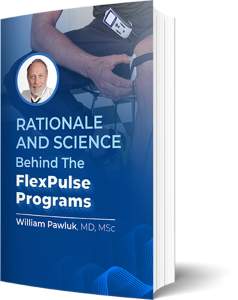PEMF therapy for mental health and wellness has proven to be an effective, non-invasive and a drug-free way of addressing mental health concerns. Through it, you can achieve enhanced brain and sleep health easily with low-frequency pulsed electromagnetic fields. A significant amount of research on PEMF therapy for mental health helps support its effectiveness.
Fortunately, taking a passive approach to taking better care of your mental health and wellbeing is easy with PEMF therapy. With this frequency approach to treating depression and boosting your mood, it has the potential to be more effective than only antidepressants alone. PEMF therapy is also FDA approved and used widely throughout the world, not just in the U.S. This type of therapy is also helpful in treating brain fog, including difficulties with concentration and recall.
Depression and PEMF: What’s the Link?
Low cellular voltage in the brain causes depression and other mental issues and potentially causes changes in brain tissue itself. If you combine that with a loss of optimum sleep, you may find unexpected brain health issues affecting the entire body and life of an individual. Pulsed electromagnetic field therapy research points at some sort of electromagnetic charge deficiency in neurological disease states, and indicates that it should be addressed via electromagnetic therapy.

What Does the Research Say About PEMF?
Recently, Scientific American published an article that discussed the effects of PEMFs on the brain. It agrees that PEMF exposure affects the brain, and that TMS or high intensity PEMF are the beneficial form of electromagnetic fields that have the potential to heal the brain and reverse damage caused by PEMF pollution.
Depression1, epilepsy2,3, headache4, Parkinson’s disease5, alzheimer’s6, and insomnia7 sufferers all find incredible mental healing effects with PEMF therapy. Many of these studies are done using rTMS or Repetitive Transcranial Magnetic Stimulation, which is basically high intensity pulsed electromagnetic fields applied directly to the brain.
Furthermore, PEMF therapy may also be helpful with cognitive decline in situations such as Alzheimer’s and Parkinson’s. Multiple studies have been done surrounding the frequency waves used in PEMF therapy, suggesting the use of this type of therapy for more significant factors than only better sleep or a better overall mood.
How Can PEMF Help with Depression?
Looking at PEMF therapy neuro-scientifically, we can see that younger more energetic neurons ensure optimum function and slower ageing. With PEMF therapy having hormone balancing8 effects, it is indeed capable of being the single universal wellness modality for mental well-being.
Many people can readily agree that improved mood and sharper cognitive function completes the mental wellness package. Tension and stress can no longer get to you when the brain is powerful enough. Of course, you still have to take care of nutritional and exercise needs. With a better state of mind, however, motivation comes more easily.
Harvard Medical affirms that better sleep means better health, although in the linked article it fails to report the use of magnetic stimulation. However, as expected, TMS for depression is recognized by them as well and there is outside data about lower intensity PEMFs helping as well. Hopefully, the sleep article gets updated when PEMF finally gets the attention it deserves.
A Life Sciences in Space journal study9 reports:
“.. a weak electric field, alternating with a frequency of 10 Hz, affects human circadian rhythms in the same manner as the total of the natural fields; i.e., it shortens the period, and it prevents real internal desynchronization.”
This tight frequency range hovering close to the Schumann resonance of 7.8 Hz is also considered as frequency of Om / Amen / Ameen and has been studied scientifically since at least 1970, when the above article came out. Perhaps these frequencies were considered so due to their healing nature, especially on the mind. Remember, religion today was society earlier. The foremost focus of every society is survival, which simply isn’t possible without a productive and positive state of mind of the people.
Users of 10 Hz PEMF stimulation have regularly reported astounding recovery from not only physical, but also neurological issues and feeling elated at the same time. With day time and before sleep use of 10 Hz, cellular regeneration is greatly enhanced while you also experience a state of positivism and balance, helpful for depressed mood. Below 3 Hz PEMF applied to the brain would induce a relaxed state and slower thoughts, making it possible to fall and stay asleep naturally. The magic happens at 3 Hz for all night sleep use. At slightly higher low frequencies, such as 10 Hz, cellular regeneration is greatly enhanced while you also experience a state of positivism and balance.
What are the Benefits of Using PEMF for Depression?
rTMS is used for more severe forms of depression and requires treatment in a specialized facility. Lower intensity PEMFs have been found helpful for milder forms of depression and low mood. One of the major benefits of lower intensity PEMF therapy is that it can easily be partaken at home, without the need for expensive, inconvenient, or uncomfortable in-office visits. This therapy is also drug free, keeping the body in as natural a state as possible. This type of brain stimulation may have other benefits as well, as a side effect on top of better sleep and better mental health.
There are indications that PEMF may boost circulation, enhance cellular respiration, and improve nutrient intake. The body as a whole may function better when treated with low frequency electro-magnetic waves.
Perhaps one of the biggest benefits of PEMF therapy for depression is that there are no known negative side effects. The use of electro-magnetic pulses only provides benefits with no drawbacks. Positive side effects may be experienced while the user is focused on relieving depression or achieving better and more restful sleep.
In addition to being able to be done completely in the comfort of the home, PEMF therapy is also not disruptive while treatment is being applied. Sleep during PEMF treatment is encouraged to encourage more restful and refreshing rest. Otherwise, PEMF can be experienced with no disruption while reading, eating, or otherwise doing anything that may be able to be done while sitting stationary and not moving far from the machine.
Final Thoughts About PEMF and Depression
PEMF therapy for depression is not yet well-known, but it is perhaps one of the best emerging therapies to encourage benefits in many facets of wellbeing. Side effects may include better sleep, less anxiety, and a better overall feeling of general wellness — with no negative side effects being recorded. There is nothing to lose and everything to gain with PEMF therapy.

